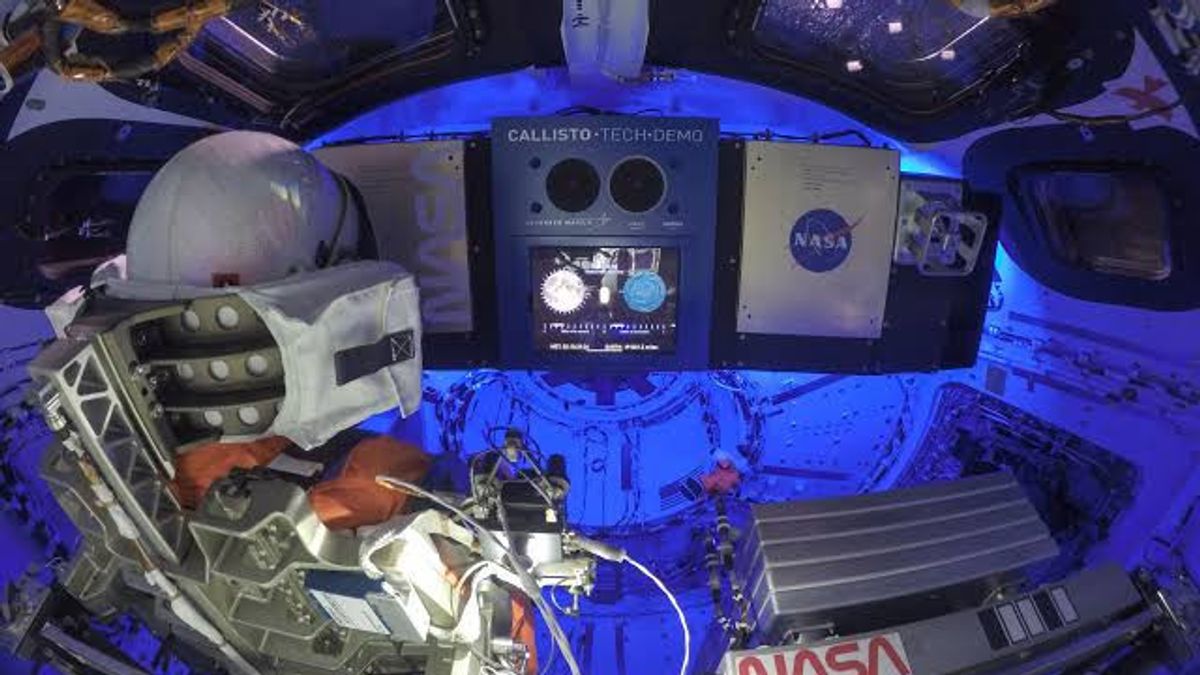JAKARTA - Often astronauts are busy with research while they are in space, but that doesn't mean they don't need communication with their families on Earth, it's more fun to make video calls.
A web conferencing company, Cisco claims to have produced several new innovations for Webex, after the platform was used on NASA's Artemis I mission.
The mission was recently launched which took 25 days on the Orion spacecraft traveling around the Moon.
Orion maker Lockhead Martin collaborated with Amazon and Cisco to test Calisto during the Artemis I mission yesterday.
Calisto itself is a content of a technology demonstration made up of Alexa and the iPad running the Webex, all placed in radiation-protected casings.
Callisto's own goal is to see how consumer technology today can be used effectively in space.
On this occasion, Cisco wants Webex to facilitate the best face-to-face interaction between those on Earth and those in space.
According to Cisco, this is quite important in space missions that often take a long time, keeping astronauts away from their loved ones.
Cisco's innovation started placing cameras facing the iPad to see if a video feed from mission control was successful. To operate the software, Cisco is also developing automatic macro to run certain functions.
However, this new innovation is not without challenges. Cisco's vice president of product management, Jono Luk at an event outlines what the company is facing in making video calls work between Earth and outer space.
Luk said the lack of internet connection. NASA uses its space network to communicate with the spacecraft, which consists of three satellite disks around the world, so Webex should take advantage of this to send its video signal.
Launching TechRadar, Thursday, December 29, the problem is that Cisco only allocates around 128kb/s of bandwidth, so Webex researchers have to modify the software to shrink video signals by a factor of ten, while maintaining quality.
Another problem is latency. Luk explained that using a Webex between any point on Earth only resulted in a latency rate of about 40 to 100 milliseconds, but during Artemis 1, the latency encountered was between five and seven seconds.
Even when the Webex was used on the International Space Station (ISS), Webex did not encounter latency problems at this scale. So researchers had to create a new algorithm to take that latency into account, ensuring audio and video remained synchronous.
After some time testing Callisto during the mission, Luk said slow communication issues could be balanced by utilizing images instead, using the whiteboard features inside the Webex and Cisco Webex Board in mission control.
Sekarang setelah penelitian itu selesai, Luk menyatakan Webex telah berhasil di semua lini, menetapkan rekor panggilan video jarak jauh selama misi, sekitar 260,000 mil antara titik akhir.
However, Luk admits that there are still obstacles in human interaction when communicating at such a long distance. He expressed his desire that some types of UI prompts could be developed, if there was time, to notify the user when the signal had reached someone at the other end.
In this way, they can find out the difference between latency and user or technology errors if their interlocutor is still not responsive.
For your information, Artemis' next mission is in process, Cisco doesn't know if it will be called up again. However, Luk believes the Webex will be ready for a long journey ahead.
The English, Chinese, Japanese, Arabic, and French versions are automatically generated by the AI. So there may still be inaccuracies in translating, please always see Indonesian as our main language. (system supported by DigitalSiber.id)













